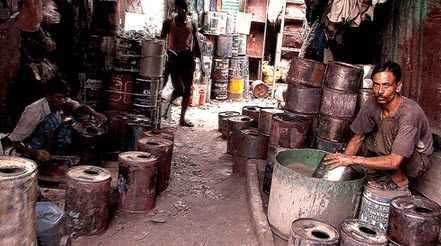On Wednesday, the 25th of July, 2018, Pakistanis went to the polls for their 11th general election in 70 years of statehood. It was also the third election in the last 10 years, and marked the first time the country has seen two democratically-elected legislatures complete their full, five-year terms in succession.
While official confirmation of results from 272 National Assembly seats, and nearly 600 seats across four provincial legislatures were still awaited, headline results have emerged showing the Imran Khan-led Pakistan Tehreek-i-Insaf (PTI) take a commanding lead in over 114 National Assembly seats. With the help of allies and independently elected candidates, it looks set to form a government both in the centre, and in the provinces of Khyber Pakthunkhwa and Punjab.
The task confronting the government is immense, no less so because of its own ambitious agenda set out in a 100-day plan and the election manifesto document. Key takeaways from these two documents, as well as Khan’s victory speech, shows the party directing intensive focus on governance reform, accountability reform, improved social sector outcomes, and revitalizing growth by raising foreign and domestic investment. A common theme across its development vision is the strengthening of institutions through de-politicization in their functioning and meritocratic appointments.
The reforms being discussed and proposed would sound familiar to those who’ve followed the normative policy conversation in the country. Many of the issues confronting the country’s development path are familiar, and have been diagnosed at length. However, the repeated failure to resolve them showcases a number of deeper problems that confront any government.
In that sense, the incoming government will face many of the same challenges that previous governments have encountered upon entering office. The first and foremost challenge remains the macro-economy, where fast-dwindling foreign currency reserves have pushed the country to the precipice of another balance of payment crisis. This will likely only be resolved with the help of the International Monetary Fund (IMF), and talks are already underway for the largest bailout in the country’s history. The conditional reforms accompanying the IMF’s program, such as rollback of subsidies, reduction in the fiscal deficit by curbing government spending, and privatisation of loss-making state owned enterprises, will likely be the toughest seen to date. The stabilization route will reduce the policy space available for the new government, and may limit the extent to which it can undertake development spending along the priorities it laid out earlier.
Secondly, while it looks likely that the centre and the Punjab government (the most well-resourced subnational entity in the country) will remain with the same party, the majority in both legislatures will be very small. This means that the policymakers may be confronted by an array of competing interests and stakeholders, that will exercise varying degrees of influence on the policy process. In the absence of breathing room in government, taking tough decisions – such as those pertaining to existing rents, discretionary tax breaks and subsidies, and the preferences accorded to some sectors of the economy over others – will be more difficult. For example, the winning party has spoken at length about water conservation and improving irrigation efficiency. Will it be able to push through much-needed reforms in water pricing and usage, given that it is relying on the support of rural agriculturalists for its formation?
Lastly, while the overall messaging and rhetoric has been encouraging, the government will be confronted with a public sector workforce that continues to suffer from a lack of capacity and efficiency. The existing conversation around the issue has mentioned civil service reform, which would enable the government to bring in talent from outside the system. However, much of the everyday functioning of the state rests with the provincial and local bureaucracies, which are likely to continue to resist change. At the same time, actualization of any development agenda will require reforming the way these bureaucracies work, reducing their inefficiencies, and improving the general state of interface between the public sector and the citizens. On this front, the thinking is less clear and requires much more deliberation.
These are just some of the challenges that await the incoming government, regardless of whatever final form it eventually takes. One positive outcome from the election phase, and the years preceding it is that the appetite for a policy conversation has grown in the country. Political stakeholders now actively compete on claims of service delivery, and general discourse has expanded its ambit to include greater focus on institutional reforms. It is thus timely for the next government to engage with researchers and see what sort of reforms are both feasible, applicable, and offer the greatest amount of impact given the cost calculus involved.
Umair Javed is the Program Manager and an Affiliate at the Consortium for Development Policy Research (CDPR).






